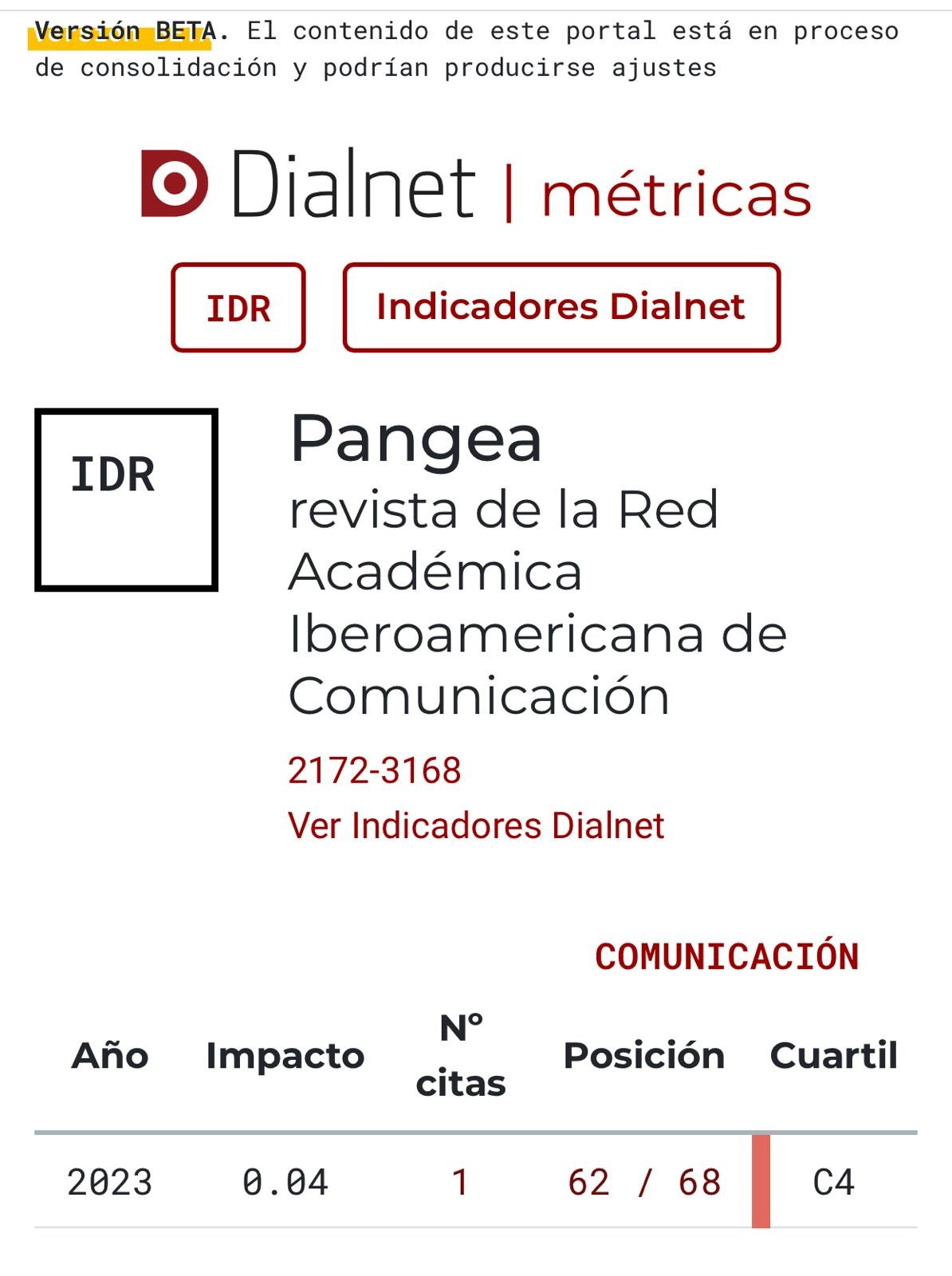An approach to the intimacies visible in the digital landscape
DOI:
https://doi.org/10.52203/pangea.v5i1.92Keywords:
Social Networks, Subjectivity, PrivacyAbstract
The development and the rise of communication technologies impact in social life generating new practices and rituals of socialization, and therefore new subjectivities be marked by the fluidity, speed, visibility and virtual. The transformations that occur in subjectivity and intersubjectivity from new practices on selfbuilding of the personality are sustained in the use of online social networks. The transition from paper to screen not only evidence the change of the medium but the transformation of subjectivity that is built in the new self-referential and biographical genres. That is, other forms of incorporation and consolidation of one's experience and relationships, where appearances and visibility acquire a dominant value about to show ours private lives. However, in the first instance, the process by which new technologies are developed largely involves the loss of personal privacy because the way the economy works so requires. Systemic pressure forces us to give up our privacy in accessing the services of the information society. In this sense, not only transform us from the way we think the new emerging virtual realities but also by how we experiences it. The challenge requires looking beyond the near horizon to expose the hidden logic linked to the new practices and consumer proposals wich are hybridized and shapes our individual and collective consciousness.
References
Agudo, A. (2013). Internet lo sabe (casi) todo de usted. Recuperado el 25 de marzo de 2013 de: http://sociedad.elpais.com/sociedad/2013/03/17/actualidad/1363555505_736818.html
Bilbao, H. (2009). Paula Sibilia: El cuerpo es la nueva utopía. Recuperado el 15 de abril de 2013: http://edant.revistaenie.clarin.com/notas/2009/07/11/-01955619.htm
Deleuze, G. (2010): Derrames. Entre el Capitalismo y la Esquizofrenia. Buenos Aires. Editorial Cactus, Serie “Clases”.
-----“Posdata sobre las sociedades de control”, en Christian Ferrer (Comp.) El lenguaje literario, Tº 2. Ed. Nordan, Montevideo.
De Rivera, J. (2012). Soberanía o autonomía tecnológica. Recuperado el 25 de marzo de 2013 de: http://sociologiayredessociales.com/2012/11/soberania-autonomia-tecnologica-redes-sociales
Di Próspero, C. (2009). “Tecnologías Infocomunicacionales. Cuerpos que importan en Facebook”. En: Questión, Revista Especializada en Periodismo y Comunicación, Vol 1, N°24. Recuperado el 5 de abril de 2013 de: http://perio.unlp.edu.ar/ojs/index.php/question/article/view/870/771
----- (2011): “Autopresentación en Facebook: un yo para el público”. En: Revista Latinoamericana de Estudios sobre Cuerpos, Emociones y Sociedad. Nº6. Año 3. Recuperado el 5 de abril de 2013 de: http://www.relaces.com.ar/index.php/relaces/article/view/39/90
Foucault, M. (1998). Las palabras y las cosas. Una arqueología de las ciencias humanas. Buenos Aires, Siglo XXI.
Scherer, M. (2012). How Obama's data crunchers helped him win. Recuperado el 10 de abril de 2013 de http://edition.cnn.com/2012/11/07/tech/web/obama-campaign-tech-team
Sibilia, P. (2005). El hombre postorgánico. Cuerpo, subjetividad y tecnologías digitales. Argentina. Fondo de Cultura Económico.
----- (2008). La intimidad como espectáculo. Argentina. Fondo de Cultura Económico.
Urresti, M. (2008). Ciberculturas juveniles. Los jóvenes sus prácticas y sus representaciones en la era de Internet. Buenos Aires. La Crujía.
Valiente, F.J. (2004). Comunidades virtuales en el ciberespacio. Doxa N° II. Recuperado 25 de marzo de 2013 de: http://doxacomunicacion.es/pdf/artculovaliente.pdf
Downloads
Published
Issue
Section
License
Copyright (c) 2014 Carolina Mazzetti Latini

This work is licensed under a Creative Commons Attribution-NonCommercial-NoDerivatives 4.0 International License.
https://creativecommons.org/licenses/by-nc-nd/4.0/deed.es





